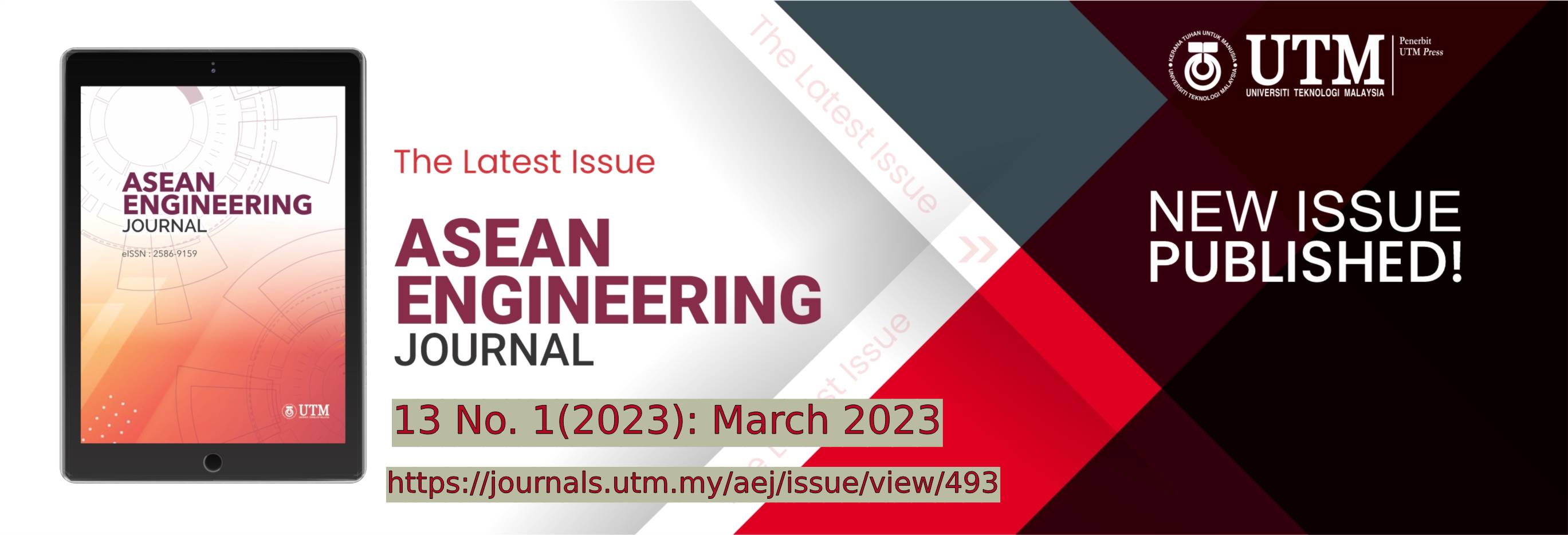CORROSION OF GALVANISED AND UNGALVANISED COLD-FORMED STEEL IN CHLORIDE AND SULPHATE SOLUTIONS
DOI:
https://doi.org/10.11113/aej.v13.18564Keywords:
corrosion, durability, light steel frame, cold-formed steel, strength reductionAbstract
The light steel framing is widely use around the world to replace the conventional construction method. However, there are some factors that affect the corrosion rate of the steel framing structures. The factors are oxygen, humidity, sulphate, chloride and copper sulphate which highly contain in seawater regions or specifically coastal area. Hence, all these factors that influence the corrosion rate of the steel framing shall be study to determine the service life and the maintenance required throughout their service life. This paper studies the effect of the chloride, sulphate and the rainwater to the light steel framing structure and the corrosion resistance that provided by the zinc coating on the surface of the steel. The galvanized steel and ungalvanized steel are immersed in different concentration of sodium chloride and copper sulphate solutions for 28 days. The corrosion rate is obtained by measured the weight loss of the steel coupons in the interval 7-days of the immersion time. Other than that, the corrosion rate in seawater is analysed by the result of 0.5 Mol of NaCl and 0.016 Mol of CuSO4. The corrosion rate for the NaCl and CuSO4 is much higher than the corrosion rate in the rainwater. The corrosion resistance that provided by the zinc coating is extremely higher compared to the steel that without the protection. Prediction equation of metal loss from experimental study is proposed for a reliable light steel structure in a function of time.
References
L. Yeong-Huei, T. Cher-Siang, L. Yee-Ling, A.M. Muhd Zaimi, 2013 Dry Wall Construction in Light Steel Framing, in: M. Soutsos, C. Goodier, T. Le Trung, T. Nguyen Van (Eds.), Sustain. Built Environ. 461–466. Now Futur., Construction Publishing House, Hanoi, Vietnam
R.M. Lawson, P. Grubb, J. Prewer, P.J. Trebilcock, 1999. Modular Construction using Light Steel Framing: An Architect ’s Guide, Steel Construction Institute. SCI Publication P272, The Steel Construction Institute.https://www.steelconstruction.info/images/f/fd/SCI_P272.pdf
R.M. Lawson, S.O. Popo-Ola, A.G. Way, T. Heatley, R. Pedreschi, 2010. Durability of light steel framing in residential applications, Proceedings of the Institution of Civil Engineers. Construction Materials. 163(2):109-121. https://doi.org/10.1680/coma.2010.163.2.109.
Y.H. Lee, Y.L. Lee, C.S. Tan, 2012. Experimental investigation on cold-formed steel beams under pure bending, Jurnal. Teknologi. (Sciences Engineering). 58(1):13-20 https://doi.org/10.11113/jt.v58.1257.
Y.H. Lee, C.S. Tan, S. Mohammad, 2017 In-plane sway behaviour of slender cold-formed steel bolted frames, Thin-Walled Structures. 114:11-21. https://doi.org/10.1016/j.tws.2017.01.024.
C.S. Tan, Y.H. Lee, Y.L. Lee, S. Mohammad, A. Sulaiman, M. Md Tahir, P.N. Shek, 2013. Numerical simulation of cold-formed steel top-seat flange cleat connection, Jurnal Teknologi (Sciences Engineering). 61(3):63-71. https://doi.org/10.11113/jt.v61.1769.
Y.H. Lee, C.S. Tan, S. Mohammad, J.B.P. Lim, R. Johnston, 2015. Numerical study of joint behaviour for top-seat flange cleat connection in cold-formed steel structures. Sci. Iran. 22(4):1554-1566
J.M.R.S. Appuhamy, M. Ohga, T. Kaita, R. Dissanayake, 2011. Reduction of Ultimate Strength due to Corrosion-A Finite Element Computational Method, International Journal of Engineering 5(2):194-207
A. Britner, C. Dieu, R. Podleschny. 2021. Corrosion protection for cold-formed structural steel elements. Steel Construction, 14(4):250-257 https://doi.org/10.1002/stco.202100002
S. Xu, Z. Zhang, R. Li, H. Wang. 2019. Effect of cleaned corrosion surface topography on mechanical properties of cold-formed thin-walled steel. Construction and Building Materials, 222:1-14. https://doi.org/10.1016/j.conbuildmat.2019.06.130
B. Nie, S. Xu, Z. Zhang, R. Gu. Experimental investigation on corroded cold-formed steel beam-columns under compression and major axis bending. Journal of Constructional Steel Research, 169:106026. https://doi.org/10.1016/j.jcsr.2020.106026
M. Xia, S. Xu, Y. Wang, H. Li, B. Zhao. 2022 Experimental study on bearing capacity of corroded Q345 H-shaped steel column under axial compression load. Journal of Building Engineering, 52: 104354. https://doi.org/10.1016/j.jobe.2022.104354
S.A. Park, J.G. Kim, Y.S. He, K.S. Shin, J.B. Yoon, Comparative study on the corrosion behavior of the cold rolled and hot rolled low-alloy steels containing copper and antimony in flue gas desulfurization environment, The Physics of Metals and Metallography 115:1285-1294 (2014). https://doi.org/10.1134/S0031918X14130201
N.D. Nam, M.J. Kim, Y.W. Jang, J.G. Kim, Effect of tin on the corrosion behavior of low-alloy steel in an acid chloride solution, Corrosion Science. 52(1):14-20 (2010). https://doi.org/10.1016/j.corsci.2009.08.036
M. Moniruzzaman, M.M.A. Bepari, M.M. Haque, S.A. Limon, 2014 Corrosion of Galvanized Steel and Copper in Aqueous Environments, Journal of Mechanical Engineering. 43(2):63-67. https://doi.org/10.3329/jme.v43i2.17828
A.G. Association, 2010. Performance of Hot-Dip Galvanized Steel Products in the atmosphere, soil, water, concrete and more, North Am.
K. Zhang, R. Song, Y. Gao, 2019 Corrosion behavior of hot-dip galvanized advanced high strength steel sheet in a simulated marine atmospheric environment, International Journal of Electrochemical Science 14:1488-1499 https://doi.org/10.20964/2019.02.13
T. Ahn, H. Jung, X. He, O. Pensado, 2008. Understanding long-term corrosion of Alloy 22 container in the potential Yucca Mountain repository for high-level nuclear waste disposal, Journal of Nuclear Materials 379(1-3):33-41 https://doi.org/10.1016/j.jnucmat.2008.06.031
T. Hirato, 2013 Thermodynamics of Aqueous Phases, in: Treatise Process Metall., Process Fundamentals, 1: 641-652, Elsevier. https://doi.org/10.1016/B978-0-08-096986-2.00036-9
M.Z. Omar, M. Rindam, 2011 The impact of acid rain on historical buildings in Kuala Lumpur, Malaysia, Design Principles & Practices. 5(6):175-191. https://doi.org/10.18848/1833-1874/cgp/v05i06/38233
M. Merajul Haque, S.A. Limon, M. Moniruzzaman, M. Mohar Ali Bepari, 2014 Corrosion comparison of galvanized steel and aluminum in aqueous environments, International Journal of Automotive and Mechanical Engineering 9:1758-1767. https://doi.org/10.15282/ijame.9.2013.24.0146
R.A. Rahbar, S.A.H. Zakeri, 2011. Mechanical properties and corrosion resistance of normal strength and high strength steels in chloride solution, Journal of Naval Architecture and Marine Engineering. 7(2): 94-100. https://doi.org/10.3329/jname.v7i2.5309
















